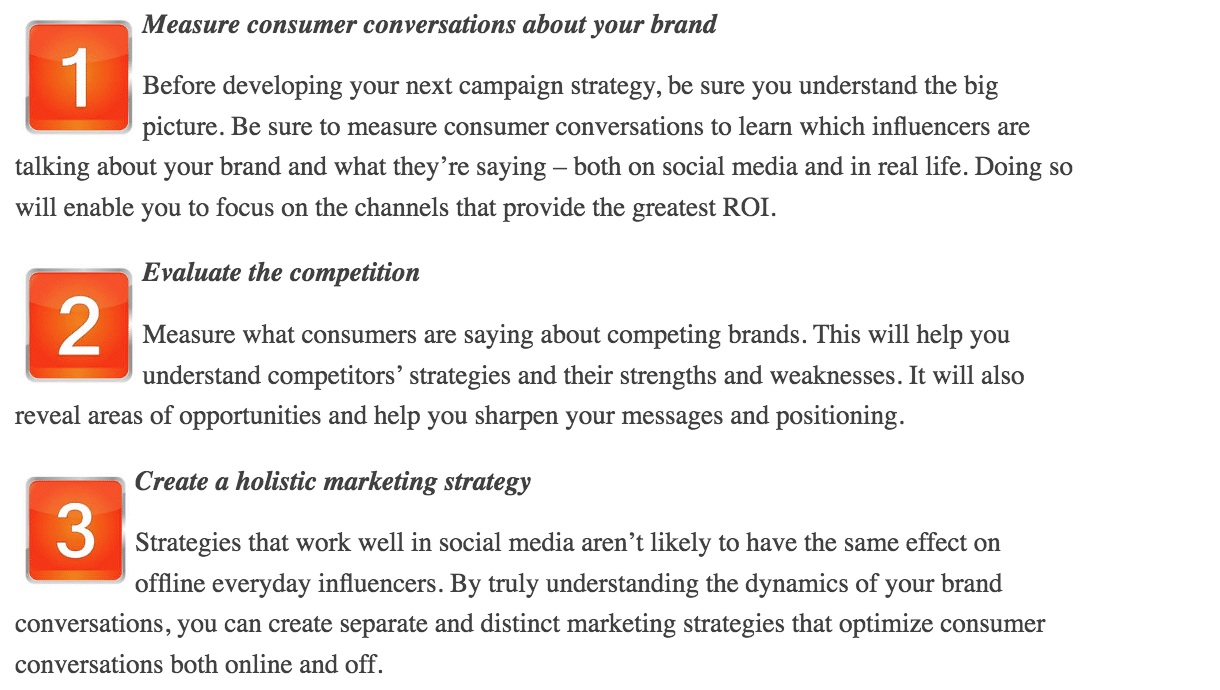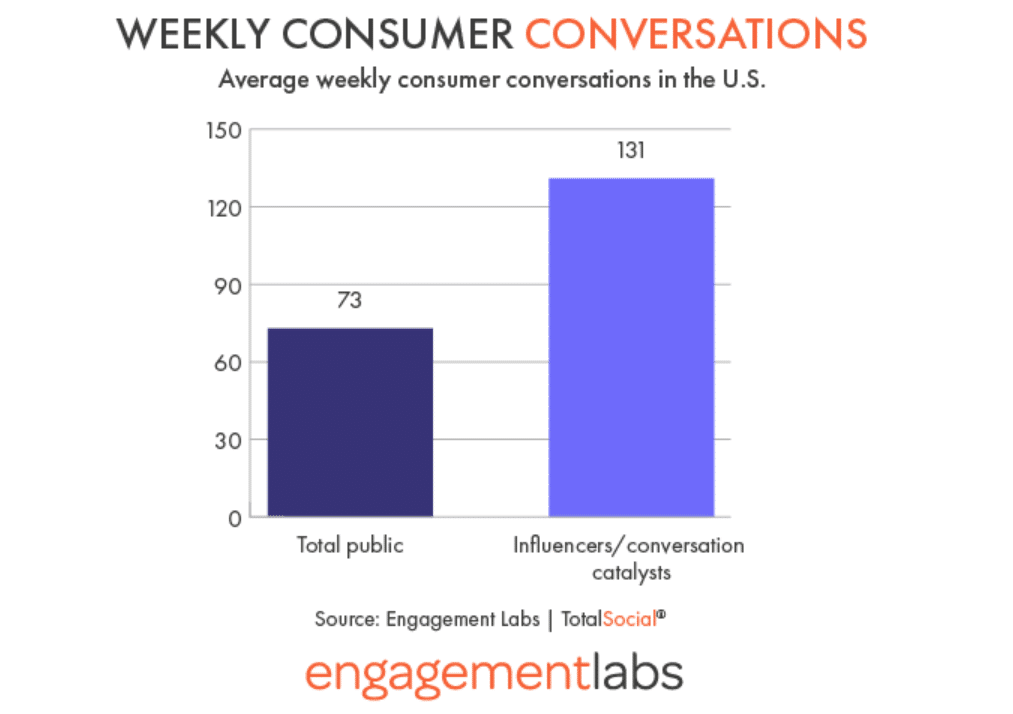When you search for “influencer marketing,” Google easily shows about 210,000,000 results in 0.55 seconds. Culling through what are the most effective strategies, forecasts and key trends that will dominate, the current state of influencer marketing, the most impactful KPIs and metrics, and distinguish which strategies you should execute to ensure they achieve success can be overwhelming and intimidating.
According to Insider Intelligence’s forecast, US influencer marketing spending will reach $4.14 billion in 2022. At Engagement Labs, we have long believed in the power of everyday influencers to drive business results. Everyday influencers—by which we mean the 1 in 10 consumers who are sought out for their advice and whose recommendations are heeded—have 131 brand-related conversations every week versus the national average of 73. Further, they regularly seek out information, including that put out by brands, that helps them keep up with what’s new and worth talking about. By reaching these influencers, marketers enjoy almost twice the word-of-mouth reach than average consumers provide, and the impact of their recommendations is four times as great due to their credibility and perceived expertise.
Leading academics have evaluated a variety of influencer marketing methods and settled on everyday influencers as highly valuable. Focusing on the impact of influencers on new production introductions, they find the power of influencers comes in two forms: 1) by expanding the market reached by a new product and 2) by accelerating the pace of product adoption, which confers major competitive advantages over rival products.
Managing your influencer strategy with #HASHOFF
Our sister company #HASHOFF has a front row seat to the changing influencer marketing ecosystem. #HASHOFF helps brands and agencies source content creators through their owned search platform to identify and activate the right creators to share brand messages organically and across your omni-channel marketing strategy—and measure the results.
Influencers present a unique opportunity for brands to be first to the party and get credit for helping beloved creators monetize their passions. Far from fearing being seen as “sell-outs,” creators are eager to work with brands that authentically reflect their personalities, affinities, and lifestyles in transparent ways. For them, sharing on behalf of brands is an extension of their lifestyles, and something they are glad to promote. By utilizing these highly authentic voices within target demographics, #HASHOFF enables brands to develop content strategies quickly, effectively and efficiently to be utilized within the confines of social and for omnichannel distribution applications—content ownership, website creative, marketing materials, programmatic display ads, connected TV, OTT, and digital out of home.
According to Adweek, “Micro-influencers have built loyal and dedicated communities of followers without the help of teams of marketing professionals, and their followers respect them for it.” In order for brand managers and agents to benefit from the organic, authentic and independent content that comes naturally with influencers, the use of technology democratizes the influencer market, acting as a fair and informed “agent” for all sides.
This suggests brands cannot expect the same people who advocate the brand online to do so offline—and vice versa. How can brands best activate influencers online and offline, everyday and micro?
3 ways to drive conversations about your brand
With the right marketing mix, brands can unleash the full power of consumer influencers
Social media and influencer marketing is a tremendous opportunity for brands to reach vast audiences, and that everyday and micro-influencers both drive sales that brands can’t afford to ignore. By enlisting strategy incorporating both #HASHOFF and Engagement Labs elements, brands are able to improve content performance while reducing overall costs with the ability to track the efficacy in both online and offline contexts.
This article originally appeared on the Engagement Labs blog; reprinted with permission.






